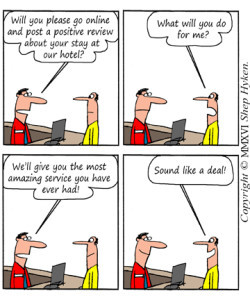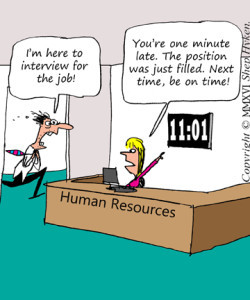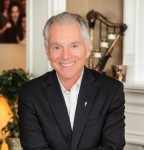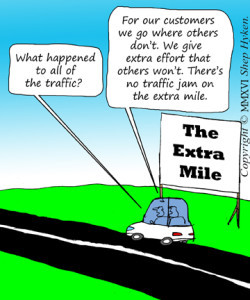Shep Hyken's Blog, page 192
March 30, 2016
Bribe Me With Amazing Service
 Social Review Sites
Social Review SitesMy automobile dealer wants my experience with them to be perfect. Really, they do! It turns out that the dealership is given a financial incentive by the automobile manufacturer to deliver excellent service. They are worried that if the dealership fails, then the next time I buy a car I may switch, not just to a different dealership, but to a different brand all together. Even though it’s not the manufacturer’s fault that the dealer gives me a bad customer service experience, the dealer’s problems reflect poorly on the brand.
So whenever I bring my car in for service, the service manager reminds me how important it is for him to get a good review. He wants me to give him a perfect ten, and he gives me an incentive to do so. More on that in just a moment.
It turns out that some of the reviewers on social review sites such as Yelp, Trip Advisor and others are customers who have been bribed to leave those kind words. Now, bribe might be a strong word, but there is an incentive. Customers may be offered a discount or free merchandise. I’m not saying this is completely wrong. Giving a customer a coupon or discount for leaving a favorable review doesn’t bother me. It’s a way of nudging them to take action. And if your customers are not happy, a small discount won’t be the incentive that gets them to come back – or gets them to leave a positive review.
So, back to my auto dealership. They offered me a bribe to answer the manufacturer’s survey and give them high marks. The bribe was simple and, most important, ethical. The service manager made it clear he wanted me to give him a ten on the scale of one to ten, with ten being “excellent.” The incentive for me to do so was that he was going to give me the service I expected. He told me that if the service he gave me was anything less than a ten, he wanted to know about it so he could fix it. That was the bribe. He would deliver flawless service in exchange for a good review and a high score. This is a bribe I liked!
I once stayed at a hotel that made the same offer. There were several signs that asked for a review on one of the social review sites, such as Yelp and Trip Advisor. The incentive to do so? It was similar to the car dealership. If they were falling short, they wanted to know so they could fix the complaint or problem. It was obvious that the hotel staff was 100% committed to the program.
So, if you want to bribe me with amazing service, I’m in!
Shep Hyken is a customer service expert, keynote speaker and New York Times bestselling business author. For information contact or www.hyken.com. For information on The Customer Focus™ customer service training programs go to www.thecustomerfocus.com. Follow on Twitter: @Hyken
(Copyright © MMXVI, Shep Hyken)
The post Bribe Me With Amazing Service appeared first on Shep Hyken.
March 29, 2016
Amazing Business Radio: William Donius

William Donius on How to Unlock Your Inner Genius
Shep Hyken speaks with New York Times Bestselling author, speaker, and philanthropist, William (Bill) Donius, about thinking differently. Bill shares his methodology from his book, “Thought Revolution: How to Unlock Your Inner Genius.” He shares very specific techniques that you can put to use immediately. It’s time for you to stop saying you’re going to think outside the box, and start doing it! Listen to this episode and find out how to unlock your inner genius!
Click here to listen and subscribe to Amazing Business Radio on iTunes.
“Thinking outside the box is a great idea, if only we knew how to do it.” – William Donius
The post Amazing Business Radio: William Donius appeared first on Shep Hyken.
March 28, 2016
5 Top Customer Service Articles For the Week of March 28, 2016
Each week I read a number of customer service articles from various online resources. Here are my top five picks from last week. I have added my comment about each article and would like to hear what you think too.
Dear Customer Service Centers, Please Stop It With the Scripted Empathy by Katherine Reynolds Lewis
(Fortune) Inside the touchy feely new world of customer service call centers.
My Comment: There is very little sincerity in customer service scripts. When I call or contact a customer support center, I expect some sort of empathy. But, when it is scripted and delivered in a robotic tone of voice, I immediately realize the insincerity of a support center rep that is just going through the motions. The best reps can use a script as a guideline while showing their customer that they genuinely care and are there to help and resolve the issue or answer the question.
Keep it Simple by Deena M. Amato-McCoy
(National Retail Federation) Consumer survey shows the importance of streamlined brand experiences.
My Comment: Simply put… Customers like simplicity. Even though this article is focused on retail, the concept is valid for any type of business. Remove the friction points in a customer interaction to make the experience easy and smooth.
Famous Movie Quotes That Have No Place in Customer Service by Doug Sandler
(Doug) In business, especially when working to provide exemplary service, those in a position to make or break the customer experience, need to closely guard each and every word out of their mouths. Take a look at the scripted lines below and see why they have no place in customer service today.
My Comment: Doug Sandler, also known as “Mr. Nice Guy,” shares some movie quotes, some that I’m sure you will recognize, that teach us some good customer service lessons. Not only educational, but entertaining as well.
The State of Retention Marketing Guide by The AgilOne Success Team
(AgilOne) In this guide, we discuss the state of customer retention, what drives consumers to fall in love with brands, and simple tips for how to get customers to commit to your brand for life.
My Comment: 73% of customers are “one and done.” Yet 78% of existing customers spend 83% more per year and shop 60% more often. If you like these types of stats and facts, then you will enjoy this special report on the State of Retention Marketing from AgilOne Academy. Take the time to download it (and you don’t need to give your email address to get it.) You’ll be glad that you did.
11 Ways Bad Customer Service Is Burning Your Bottom Line by Robbie Richards
(JitBit) This infographic covers a range of data points showing how bad customer support will cost any business, in any industry a lot of money. Below the infographic, you will find 11 of the costliest customer service traits to avoid.
My Comment: There is an old saying that goes like this, “Advertising doesn’t cost. It pays.” It’s the same with customer service. Investing in customer service will pay. And not investing… well that may cost. And this article/infographic proves it.
Shep Hyken is a customer service expert, professional speaker and New York Times bestselling business author. For information contact or www.hyken.com . For information on The Customer Focus™ customer service training programs go to www.thecustomerfocus.com . Follow on Twitter: @Hyken
The post 5 Top Customer Service Articles For the Week of March 28, 2016 appeared first on Shep Hyken.
March 25, 2016
Guest Blog: Why We Need Customer Service Leadership
This week on our Friends on Friday guest blog post my colleague, John Smart shares his insights on the importance of leadership as part of customer service. I believe that it’s the leadership that creates the customer service culture and manages the vision of their organization. – Shep Hyken
We tend to focus on customer service delivery and ensuring that we have got this right. This is quite understandable, as we know customers will walk if they do not receive the right service.
You can have the best systems and processes in the world which can be copied or bought by your competitors. What really makes the difference is the people – and one of the key differentiators is leadership or how they are led.
What does it mean to be a leader? This is one question that has academics in a turmoil as over the generations there have been many theories, ideas and concepts put forward, each with their own merit, but with none actually hitting the mark. These theories range from behavioral, situational, trait – to name a few.
For myself, having studied and delivered many leadership programs, I believe that a leader will concentrate on three basic areas: Vision, Engagement and Delivery – or what I call the V.E.D. Principle.
Vision: A leader will look forward, see the positive in obstacles and planning for the future.
Engagement: Leaders are able to use their interpersonal skills to engage, communicate and influence people to get people on board.
Delivery: Leaders have the motivation, will or influence to achieve what they set out to do.
When we contrast this to “management,” we can see that management (and the literature around this) aligns to more of a process driven approach including planning, organizing, monitoring and reviewing.
Simplistically, leadership can be seen as the “what” and management as the “how.”
In addition, leadership is also not just confined to the higher echelons of a business (as some people natural assume) it should be a “golden thread” running through the whole organization at all levels.
Jack Welch, former CEO of GE, was once purported to have entered a board meeting and said: “Don’t manage – lead!” then walked out. His message was clear – good leadership would deliver what was needed.
What does this have to do with customer service, and more importantly when you are responsible for a customer service team or department? Everything.
The person supervising the customer service team needs to demonstrate as much leadership ability as the CEO of the organization. One of the main differences may be the scale and context of their vision.
Adding leadership to customer service adds a whole new value to the experience. Instead of just applying a process management driven approach, try re-aligning the service to a leadership approach.
For example, which sounds better to the team:
Customer Service Manager: ‘We need to achieve 100% satisfaction rate in the next quarter. This will be achieved by cutting down response times and focusing on the top priorities first.”
Or
Customer Service Leader: “Team, we aim to be the best of the best in the business. There is a National Award next month. To get this we need to achieve 100% satisfaction rate. This will take some work, but I believe that we can, with some effort, get this award and prove our success. To achieve this we need to …..”
The first example demonstrates a typical process, objective driven management style. In the second, the leader has highlighted the vision, the goal, engaged the team as they now understand the reason for the extra work, which helps motivate the team going forward and achieving the deliverable.
The examples given are very simplistic, but they try to demonstrate the difference between a management and a leadership approach. It is only one of many examples of customer leadership, and is only scratching the surface.
The key message for those of you who are responsible for customer service teams: It is great leadership that really makes the difference.
John Smart is a development consultant, running his own consultancy. He has held senior management positions gained in Consultancy, SMEs and FTSE 100 companies, within a diverse array of industries. He is the author of PROUD – Achieving Customer Service Excellence.
For more articles from Shep Hyken and his guest contributors go to customerserviceblog.com .
Read Shep’s latest Forbes Article:
10 Reasons Organizations Fail To Deliver Great Customer Service
The post Guest Blog: Why We Need Customer Service Leadership appeared first on Shep Hyken.
March 23, 2016
Being on Time: Simply the Right Thing to Do!
 Create Confidence
Create ConfidenceVince Lombardi is the famous football coach, known for a number of amazing accomplishments as well as always being on time, if not early. It’s the being on time part of what he’s known for that we’ll be covering in today’s customer service lesson.
Lombardi used to tell his players that they needed to show up to practice 15 minutes early. Otherwise, they were considered late. His fifteen minutes early concept came to be known as Lombardi Time. This was so well known that on July 20, 2012 a new clock was erected at Lambeau Field in Green Bay, WI that was permanently set 15 minutes ahead of the actual time. Lombardi’s belief was that being on time wasn’t enough.
I was twelve years old when I started my first business, a magic show birthday party business. My first show was for 20 six-year-old kids. I did a good enough show that the parents were willing to recommend me to their friends. Before I knew it, I was doing magic shows every week.
My parents taught me some valuable business lessons back then. Without even knowing it, they were teaching me about customer service. One of the most important lessons I learned was about time, specifically being on time.
When I performed my magic shows, there was minimal set-up time. I could walk into the home, the parents would point to the place I was going to perform, and five minutes later I was ready to go. So, for a twelve year old kid, being on time was arriving five minutes early and ready to go by the time the parents expected me to perform.
My dad had a different take on this. He asked me, “Let’s say your show is supposed to start at 1:00. At what point do you think the parents are going to start looking at their watches and wondering what time the magician is going to show up?”
Even at twelve years old, I knew where he was going with the question. All of a sudden I realized that five minutes early wasn’t early enough. I embarrassingly told him probably about 15 minutes before the show. And, by the way, this was long before Lombardi Time was in vogue!
He agreed and told me that from that point forward, whatever the time the show was supposed to start, if I didn’t arrive at least 15 minutes early, I would be late. So, I made it my practice to be at least 20 minutes early.
Maybe you’re meeting a friend or work colleague for lunch and you show up five minutes late. Big deal. It’s just five minutes, and you’re just meeting a friend. What’s five minutes? My belief is that five minutes late, or even just one minute late is a sign of disrespect. The message you’re sending is that your time is more important than theirs.
Show up one minute late to a job interview and you may not get hired. Show up one minute late to a flight and the plane may already be taxiing out to the runway. Keep your customer waiting and you may not make the sale. Late is late. And as mentioned, it’s disrespectful. But being a minute or two early, and in some cases fifteen minutes early, is really more than just being on time. It shows dependability. It creates confidence. And be it for a personal meeting or something work related, it’s simply the right thing to do.
Shep Hyken is a customer service expert, keynote speaker and New York Times bestselling business author. For information contact or www.hyken.com. For information on The Customer Focus™ customer service training programs go to www.thecustomerfocus.com. Follow on Twitter: @Hyken
(Copyright © MMXVI, Shep Hyken)
The post Being on Time: Simply the Right Thing to Do! appeared first on Shep Hyken.
March 22, 2016
Amazing Business Radio: Jim Cathcart

Jim Cathcart Shares Tips on Personal Development
Shep Hyken speaks with relationship expert, author, and hall of fame speaker, Jim Cathcart, on his take on personal development. Jim shares tips that everyone can utilize to make the world, and most important, your life better. He shares his path to success and his ideas and strategies about being positive and taking control of your life. From CEOs, to entrepreneurs, to students – everyone can benefit from Jim’s words of wisdom.
Click here to listen and subscribe to Amazing Business Radio on iTunes.
“When you make life better for other people you make life better for yourself.” – Jim Cathcart
The post Amazing Business Radio: Jim Cathcart appeared first on Shep Hyken.
March 21, 2016
5 Top Customer Service Articles For the Week of March 21, 2016
Each week I read a number of customer service articles from various online resources. Here are my top five picks from last week. I have added my comment about each article and would like to hear what you think too.
CX expert predictions: 10 trends driving the future of customer experience by Kelvin Claveria
(Vision Critical) To keep up with the customer experience revolution, companies need to get a grasp of the shifts in the space. Here’s a look at trends that will shape the customer experience practice in the years ahead, according to CX influencers and experts.
My Comment: Another excellent article that showcases the latest trends in CX. Ten experts (a “who’s who” in the world of CX) share their predictions and trends. Great insights!
Customer Service 101: Three things you can do today to win over your customers by Steve Olenski
(Marketing Land) How do you maintain long-term customer relationships? Columnist Steve Olenski outlines his top three tips for improving your customer service.
My Comment: Sometimes we have to be reminded of the basics. Here are three that we can’t ever forget; value your customer’s time, respond quickly, and be genuinely nice. I told you they were basic, but so VERY important!
The 7 Sins of Mediocrity by Josh Linkner
(Josh Linkner) Since ancient times, we’ve been fascinated with the seven deadly sins that lead people astray. Gluttony, greed, and lust (among others) have certainly been the downfall of many. But lurking in the shadows lie traps just as sinister. While less overtly treacherous, these sins befall most of us at various times in our lives. They may not bring us to the ground, but they lead us to the dark place of mediocrity. Instead of succumbing, we can rise above to the rarified air of champions. Let’s keep these seven foul sins at bay.
My Comment: Great post! Mediocrity is average at best. To put it into customer service terms (which is where I spend most of my time), it’s just satisfactory. Too many people – and companies – fall into the trap of being average, satisfactory or just… mediocre. The goal is to be better than average. And, just a little better than average is all it takes to break through beyond mediocrity.
4 Technology Trends Improving Customer Experience in 2016 by Donna Peeples
(CustomerThink) Here are 4 exciting CX technology trends that will play an increasingly important role for companies in 2016.
My Comment: Whenever I read articles on the latest and greatest trends in CX, I’m just amazed. Today we have so many amazing tools/technologies available to us, and the four trends mentioned in this article should be considered by just about every type of business. As businesses learn to use the tools that enhance the customer’s experience, and the customer learns how to take advantage of some of the technologies that companies offer to make their experience better, I can ‘t think of a more exciting time to be in business.
4 Reasons Why the Chief Customer Officer Will Not Make Your Business Customer Centric by Cvetilena Gocheva
(Customer Experience.io) Even though the number of companies adopting the Chief Customer Officer (CCO) position is growing worldwide, the profession is the most fragile in the C-suite, with an average tenure of 26 months. This is because companies rush too quickly into creating the position before removing the key barriers that ensure the success of the CCO. The stand-alone technique of appointing a CCO is insufficient when it comes to facilitating a customer experience transformation within the organization.
My Comment: The C-Suite position of Chief Customer Officer is growing in popularity. This important article points out some of the obstacles that get in the way of the CCO’s success. Jeanne Bliss and Ingrid Lindberg share some important insights that need to be considered for a CCO to be successful.
Shep Hyken is a customer service expert, professional speaker and New York Times bestselling business author. For information contact or www.hyken.com . For information on The Customer Focus™ customer service training programs go to www.thecustomerfocus.com . Follow on Twitter: @Hyken
The post 5 Top Customer Service Articles For the Week of March 21, 2016 appeared first on Shep Hyken.
March 18, 2016
Guest Blog: Ownership – One Cornerstone of Customer Experience Success
This week on our Friends on Friday guest blog post my colleague, Mark Salsberry writes about how resolving issues can do more than save a single customer, it can save your brand’s reputation. Negative customer experiences will happen and I agree that we must take ownership and work to quickly resolve the issue at hand. – Shep Hyken
No matter how hard we try, sometimes we underwhelm our customers. Other times, we downright frustrate them. On a really bad day, a customer might even be insulted by an employee. Plan as we may, customer experience can go awry. So, what happens when we create an imperfect customer experience? It turns out that a dissatisfied customer will tell between 9 and 15 people about the bad customer experience, according to the Word of Mouth Marketing Association (WOMMA). If that customer writes a negative review on TripAdvisor or Yelp, then the ramifications are even more disastrous.
There are some critical components to recovering your detractors. Here is an outline for success:
Time Sensitivity
95% of unhappy customers will return if an issue is resolved quickly and efficiently. (Source: NARMS) Follow up promptly and you’ll have the upper hand saving both your customer and your brand’s reputation.
Empathy
Allow yourself to feel what your customers feel. Put yourself in their shoes and you’ll more easily get to a resolution that suits both you and them.
Ownership
Empower your employees with the ability to resolve issues quickly and efficiently. You’ll not only delight customers, but the empowerment will also delight your employees.
+1 Mentality
To overcome a negative customer experience, you can’t simply get them back to where their expectations started. You have to go beyond their expectations to delight them.
So, let’s go deeper into one of these important components of managing your customer experience: ownership.
Blame Game
Blame can be an ugly thing unless you are accepting blame rather than dishing it out. Now, most people would agree that it’s unwise to blame the customer for their bad experience. We’ve all heard the saying “The Customer is Always Right.” While there is strong opinion against this saying, bear in mind that most of your customers are not unreasonable. It is best to err on the side of assuming, rather than assigning, blame. But what about blaming your colleagues, or other departments in your company?
I was recently grabbing takeout at one of the big 3 national pizza chains. My experience was less than ideal, so I asked to speak with the manager. He came out and I explained the issue to him. He told me that this was a problem with “corporate” and there was nothing he could do about it. I left feeling like this was an acceptable part of their business and that I’ll likely encounter issues again. The blame made me feel even further from resolution. With other good pizza options, we’ve stopped spending our money there.
Fall On Your Sword
It sounds so much better to your customer when you accept responsibility. Even when it’s not your fault personally, accept responsibility on behalf of your company. Listen what it sounds like when Donald Trump blames a faulty earpiece for his recent miscue. Now, contrast that with Google accepting responsibility for a self-driving car accident. It is so much classier when we own up to our failures. Yes, it takes a lot of humility, but you’ll quickly diffuse situations by falling on your sword.
Authority
If employees need to come to you for approval, you’ve burdened your customer with multiple touch points, rather than a one-stop resolution. Beyond that, your employees feel disempowered. You’ve put them in a place where they have to apologize for keeping the customer waiting for resolution. Empower them, and both they and your customers will be delighted. Give your employees a number of first-touch resolution tools that they can use to delight your customers immediately. This authority will save customers and improve employee satisfaction, as well.
Resolving issues can do more than save a single customer, it can save your brand’s reputation. Best-in-class companies have a plan in place to follow up with their dissatisfied customers to resolve issues. Do you?
Mark Salsberry has over a decade of experience in customer experience and market research, working for and with Fortune 100 companies. He has helped Verizon Wireless implement and manage their customer experience solution and process. Mark also helped start Research Intelligence, an innovative solution that allows brands to experience their customers using streaming video and speech-to-text. Today, he’s helping businesses improve their customer experience with QuestionPro CX .
For more articles from Shep Hyken and his guest contributors go to customerserviceblog.com .
Read Shep’s latest Forbes Article:
Walmart Creates Training Academies To Improve Customer Service
The post Guest Blog: Ownership – One Cornerstone of Customer Experience Success appeared first on Shep Hyken.
March 16, 2016
How to Provide a Better Customer Experience
 Go the Extra Mile
Go the Extra MileGoing the extra mile is an old expression. It describes people who provide better customer service, do a little more than expected and try a little harder. This is a great concept for customer service and is further enhanced by Roger Staubach, the Hall-of-Fame football player who played quarterback for the Dallas Cowboys, who said:
There are no traffic jams along the extra mile.
This is a great metaphor that can be used in a variety of ways and is especially applicable to business, and specifically the concept of the customer experience (CX).
Going the extra mile is about the “baker’s dozen,” which is getting more than you thought you were paying for. It’s the extra time a salesperson spends helping you make the right selection. It’s the customer support rep that takes an extra few minutes to ensure you have all of your questions answered and won’t need to call back. You get the idea.
I was talking to a client, Chris Cielewich at FLAVORx, about this very concept. FLAVORx is a machine that takes terrible tasting medications and flavors them. Parents love this, because kids are more willing to take their medicine. Sounds good so far. There is a catch, and here is where the concept of the extra mile comes into play.
If the customer asks for the FLAVORx, it takes the pharmacist an extra 45 seconds to fill the prescription. Some pharmacies are so focused on productivity that they don’t want to take the extra 45 seconds, even if it creates a better customer experience.
Chris Cielewich conducted an experiment. He had three prescriptions to fill for his children and decided to go to three different pharmacies to see which pharmacist would recommend FLAVORx. With the kids in tow, he ventured out to fill the prescriptions. None of the pharmacists went the extra mile to ask if the kids wanted their meds flavored. When Chris asked them to flavor the medicine all three complied, but only one did so with a smile. The other two begrudgingly commented about how busy they were; obviously too busy to go the extra mile.
So what can you do to go the extra mile? Simple: Give the customer more than they thought they were going to get. The old saying of going the extra mile is a sound customer service strategy. It’s taking some extra time, making an unexpected phone call to make sure the customer is happy or adding a little “something” extra. And, this is important, through all of it never make the customer feel as if he or she is an inconvenience.
And just because there isn’t any traffic on that extra mile, it doesn’t mean you’ll be lonely. On the contrary, you’ll be “driving” that extra mile with your customers!
Shep Hyken is a customer service expert, keynote speaker and New York Times bestselling business author. For information contact or www.hyken.com. For information on The Customer Focus™ customer service training programs go to www.thecustomerfocus.com. Follow on Twitter: @Hyken
(Copyright © MMXVI, Shep Hyken)
The post How to Provide a Better Customer Experience appeared first on Shep Hyken.
March 15, 2016
Amazing Business Radio: Stan Phelps

Stan Phelps Discusses Customer Experience and The Power of G.L.U.E.
Shep Hyken speaks with Stan Phelps, author, experience architect, speaker, founder and Chief Measurement Officer of 9 Inch Marketing. They discuss the value of the customer experience and how some of the best companies exceed their customer’s expectations. Stan shares details and tips from his Goldfish anthology and his TEDx event “The Power of G.L.U.E.” If you value your customers and want to provide an amazing customer experience, this episode is for you!
Click here to listen and subscribe to Amazing Business Radio on iTunes.
“Marketing is about taking care of the customers you have, and they’ll bring you the customers you want.” – Stan Phelps
The post Amazing Business Radio: Stan Phelps appeared first on Shep Hyken.



